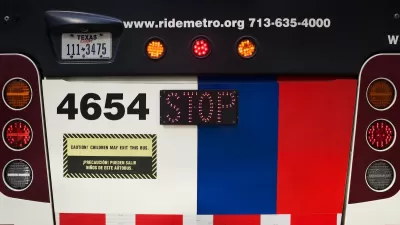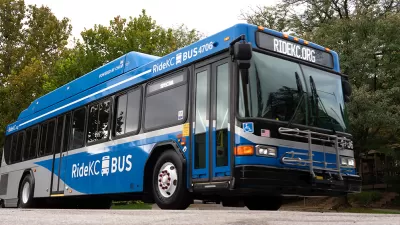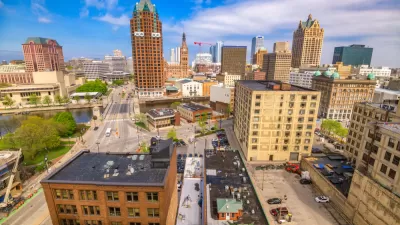Most buses are not empty enough to justify substitution of smaller vehicles.

One common argument against conventional public transit (and in favor of subsidizing taxicabs or some other type of transit based on small vehicles) is that because city buses are often half-empty, a transit agency could accommodate the same number of riders in a taxicab or dial-a-ride van. I am instinctively skeptical of this argument, because I know that transit agencies are usually quite willing to cut the lowest-performing routes at the first sign of economic distress.
But rather than relying solely on my instinctive prejudices, I decided to look for some actual data from bus agencies. I googled something like "bus ridership by route" and the first transit agency that came up was that of Albuquerque—hardly a transit-oriented city.* (See ABQ Ride for route-by-route data [pdf].)
First I looked at the city’s most heavily traveled local** route, the Central Avenue route (Route 66). It runs every 15 minutes for most of the day, for a total of about 65 one-way trips in each direction (or 130 per day). The same route has 1.7 million riders on weekdays, for a total of a little over 6500 riders per weekday. This means that the average one-way trip has about 50 riders (6500/130). If you substituted a dozen four-passenger taxicabs or seven seven-passenger minivans for Route 66, the city would have a lot of extra vehicles on the road, creating a lot of extra congestion.
Then I looked at a local* route with roughly average ridership levels, the Wyoming Boulevard route (Route 31). The Wyoming route runs every 30-45 minutes for about 13 or 14 hours per weekday, for a total of about 45 trips (counting northbound and southbound as separate trips). This route has just over 162,000 weekday riders, or 640 per weekday, or 14 riders per one-way trip. If you assume that a taxicab accommodates four riders, the city would need three or four taxicabs to equal the bus’s ridership. Assuming that the taxicabs were more than one-quarter as long as the bus, they would take up more space, thus adding to road congestion. In addition, the city would have to pay four taxi drivers instead of one bus driver; it is unclear to me whether the savings from smaller vehicles would outweigh the additional labor cost.
What about the city’s lowest-ridership local route, the 12th Street (36/37) route? This route has only 36,000 riders on weekdays, or 138 per weekday. But it only runs once an hour during the day, which means it only has 24 trips per day. So this bus typically has only six riders per trip. For a route this small, a taxicab or minivan-size vehicle might make sense. But this is the lowest-ridership route in a low-ridership city, so I am not sure of the broad relevance of this situation.
*According to the American Community Survey, only 2.1 percent of Albuquerque residents use public transit to get to work.
**That is, not counting express routes that tend to run only a few times a day or bus rapid transit that runs more frequently.

Alabama: Trump Terminates Settlements for Black Communities Harmed By Raw Sewage
Trump deemed the landmark civil rights agreement “illegal DEI and environmental justice policy.”

Planetizen Federal Action Tracker
A weekly monitor of how Trump’s orders and actions are impacting planners and planning in America.

The 120 Year Old Tiny Home Villages That Sheltered San Francisco’s Earthquake Refugees
More than a century ago, San Francisco mobilized to house thousands of residents displaced by the 1906 earthquake. Could their strategy offer a model for the present?

In Both Crashes and Crime, Public Transportation is Far Safer than Driving
Contrary to popular assumptions, public transportation has far lower crash and crime rates than automobile travel. For safer communities, improve and encourage transit travel.

Report: Zoning Reforms Should Complement Nashville’s Ambitious Transit Plan
Without reform, restrictive zoning codes will limit the impact of the city’s planned transit expansion and could exclude some of the residents who depend on transit the most.

Judge Orders Release of Frozen IRA, IIJA Funding
The decision is a victory for environmental groups who charged that freezing funds for critical infrastructure and disaster response programs caused “real and irreparable harm” to communities.
Urban Design for Planners 1: Software Tools
This six-course series explores essential urban design concepts using open source software and equips planners with the tools they need to participate fully in the urban design process.
Planning for Universal Design
Learn the tools for implementing Universal Design in planning regulations.
Clanton & Associates, Inc.
Jessamine County Fiscal Court
Institute for Housing and Urban Development Studies (IHS)
City of Grandview
Harvard GSD Executive Education
Toledo-Lucas County Plan Commissions
Salt Lake City
NYU Wagner Graduate School of Public Service






























